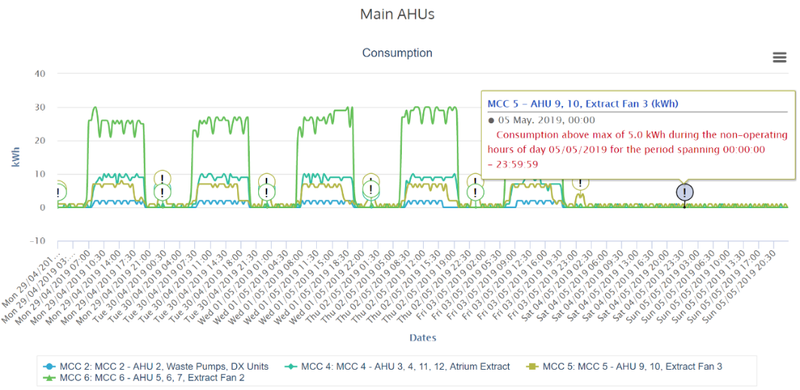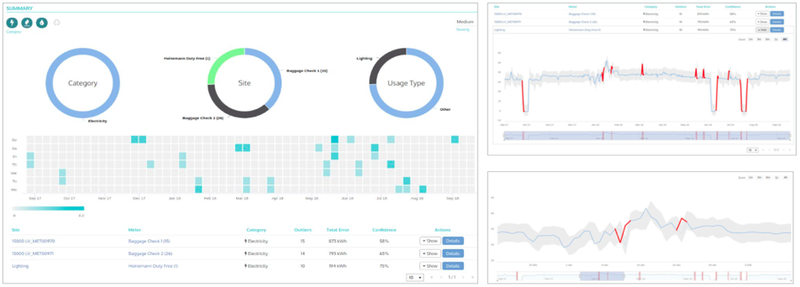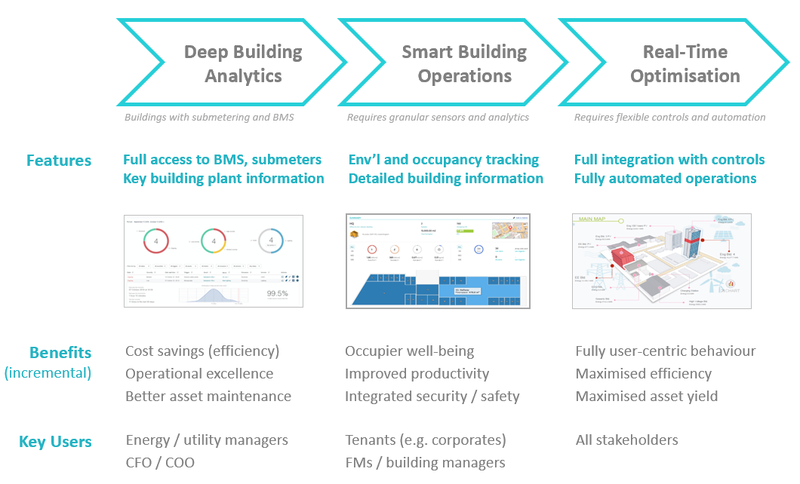
As more partners and clients approach us about more pro-active means to monitor the efficiency of buildings, let's look at how data from building management systems (BMS) can serve as the foundation for analysing buildings in deeper and more insightful ways.
The Foundation for Deep Building Analytics
The journey to make buildings more efficient often starts with basic data on a building’s overall resource-consumption levels (e.g. electricity, gas, water). This information is certainly helpful for getting a high-level view on how efficient a building is in itself or via benchmarking against others within your portfolio; however, to identify specific opportunities for efficiency improvements, additional data points are needed.
For those who want to go deeper in analysing the operational efficiency of a building’s services, data from a building’s BMS can unlock many opportunities. With a BMS connected to sub meters for various pieces of equipment providing services within a building (e.g. lighting, cooling, ventilation, etc.), operational metrics from chillers, AHUs, boilers, power and lighting systems can be obtained at a building level. With these data sets collected in high resolution (e.g. 30-minute intervals) and on an automated and continuous basis, sustainability managers can now analyse in-depth a building’s overall operational efficiency as well as drill down at individual services level or into specific building areas for monitoring purposes .


By using data accessed via a BMS alongside other building information (e.g. layout and operating hours of a building), the bigger picture of building’s performance emerges. It is often with this level of analysis that we can gain significantly more impactful insights on how building systems can be optimised.


Our partners and clients turn these insights into cost savings and efficiency gains, leading to operational excellence and maintenance best practice. For example, services operating outside a building’s working hours can be identified more readily and thus achieve significant cost savings. With data granularity on how components are used to provide various building services over time, professionals in charge of running and maintaining buildings get a better sense of whether these components should be upgraded or when they are up for maintenance for optimal efficiency.
In summary, BMS data trended and collected on a structured and continuous basis for analytical and monitoring purposes offer significant opportunities to unravel actionable insights on how building services are delivered and, more importantly, how to deliver superior performance better aligned to wider stakeholders' objectives (e.g. building occupiers and buildings owners).
Getting on the Smart Building Ladder
Lastly, in accessing and fully utilising the BMS data, sustainability professionals are investing in capabilities for deep building analytics as the basis for enabling the ‘smart’ building. More specifically, we see it as the first of three key stages to making buildings smart:

So, gaining access to BMS data is not only recommended due to the ability to monitor a building in-depth, but also because it is creating a path-dependency onto the smart-building ladder for many strategic players in the space.
We hope this piece is helpful in highlighting how BMS data can be put to good use and further unlock sustainability opportunities. Of course, feel free to get in touch for specific examples on how we are working with partners and clients to use BMS data to gain insights on making buildings more efficient and 'smarter'.

